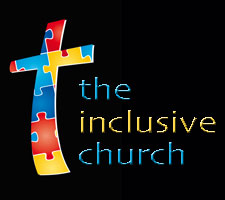5 Strategies to Include Teens with Special Needs
This is the 3rd and final post spotlighting inclusion in youth ministry environments. Katie Garvert answers questions on the same subject she’ll be addressing as part of the Special Needs Track at the upcoming Orange Conference.
Katie Garvert is the Access Ministries Coordinator for Woodmen Valley Chapel in Colorado Springs. Over the past nine years Katie has helped WVC establish inclusion programming over virtually every age and stage for this multi-site church. Access ministry hosts a dad’s support group, regular parent respite events, sibling retreats and respite camp for students with special needs. Katie also oversees the church’s deaf and hard of hearing ministry. Follow Katie on Twitter @wvcaccess.
*********************************************
AFL: In the first post, you helped us understand why teen inclusion is challenging. And yesterday you talked about the parent partnership piece. So, how do you actually create a successful youth ministry experience for the student with special needs?
KG: We use five strategies to craft a plan for students with any sort of disability, learning difference, or unique needs. We recognize that God created these students as a distinct individuals. And we allow God to pursue each one of them through the abilities and passions He gave them.
1. We help the student feel in control. We invite the promoting student to talk to us without their mom and dad. Assuming the parents have agreed to the requests I outlined in yesterday’s post, we start by acknowledging that this student’s church participation is not optional. But just because church is mandatory doesn’t mean it has to be miserable. Right off the bat, we talk about the fact we’re willing to make adjustments to their student ministry experience. We give the student a say and if they are adverse to being placed in a Small Group, we don’t argue. We then go through a series of questions to figure out what the student is good at and what they enjoy.
2. We create jobs inside the student ministry. We look for ways the student can do what they love or can feel like they are making a contribution. For example, if we discover a student likes to create PowerPoint presentations, we’re going to ask him to build a visual presentation for our student pastor. We’ll outline our needs and expectations and give this student a concrete deadline. If our student follows through, he may be asked to produce a PowerPoint presentation once a month, then twice a month and so on. This student is receiving a “reward” by seeing their work utilized at the weekly student ministry event. A routine is emerging (so important!) all while this student has a growing sense of worth and success.
3. We’re strategically creating opportunities for spiritual growth. We have a number of students with special needs running lights and sound or performing some sort of task on the production team. These students are sitting inside the tech booth for the duration of the student ministry experience, hearing the Bible-rich content we want them to hear. And they are having a shared experience, in a corporate sense, with the rest of the youth group. But it doesn’t end there. Just after the Large Group experience concludes and as other studentss are going to their respective Small Groups, the production team has a debrief meeting. The adult volunteer running the tech booth (brilliantly) invites discussion on what went right or what needs to improve for next week’s production. The students helping in the booth are often eager to weigh in on technical topics, meanwhile growing comfortable interacting with each other. The production team then closes out their meeting with a Bible-devotion, as would be the case for any ministry meeting at our church. It just so happens that the tech team’s devotion will always piggyback off the topic covered during Large Group. And the brief group questions may be from the Small Group Leaders’ discussion materials. Do you catch what’s happening here? There’s a Small Group that doesn’t know it’s a Small Group happening inside our tech booth. Our student ministry production team is a Small Group.
4. We solve problems before they become problems. Some students can and want to be part of a more traditional Small Group if we navigate their placement. Obviously the “job” approach or tech team assignment doesn’t work for every student with special needs. This is especially true for girls. Oftentimes in our early conversation with a female student, we’ll learn that she is uncomfortable around the “social girls” whom she perceives to be boy crazy or shallow. We’ve found success by pairing this student with an adult Small Group Leader who likes to explore topics outside of pop stars and trendy fashion. This Small Group Leader might be someone who throws out big ideas related to social justice or theology. While the student with learning differences may not always track with the group discussion, she isn’t going to be boiling in anger listening to the latest teen-scene gossip. In addition, we’ve placed the student with a Small Group Leader who is more naturally mindful of her needs. That leader is also going to create an accepting, safe group dynamic that invites this student’s participation.
5. We look for opportunities to multiply our own success. So, now we’ve got students inside the tech booth that are mentoring the newbies on sound, lights, etc. Some of these mentors are the same students who would have rather severed an arm than get involved in our church’s student ministry. And now these students are in their element, coming on their own accord, and in their own way leading in our student ministry. It’s really moving when you look out each week during our Large Group experience and see some students in the oddest places . . . and then you realize their unexpected task is their vehicle for spiritual growth. God is good.
Like this post? See Rules for Repost
To read previous posts in this series:
Part 1: Including Teens with Special Needs – The Challenge
Part 2: Including Teens with Special Needs – Parent Partnership
Other Posts Featuring Katie Garvert:
Helping the Marriage inside Families with Special Needs
Training Church Leaders to Start a Special Needs Ministry
Supplying a Special Needs Ministry on a Low Budget
Should Parents Lead a Special Needs Ministry?
Special Needs Space Planning Tips





Trackbacks & Pingbacks